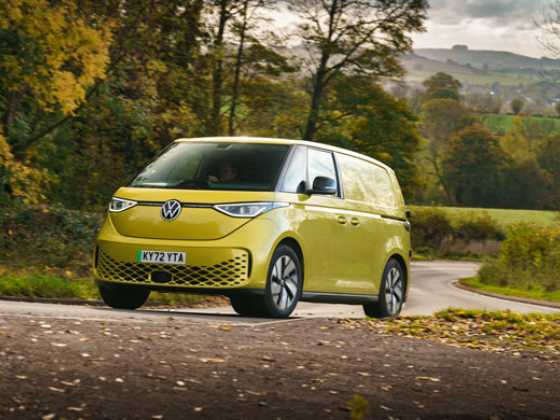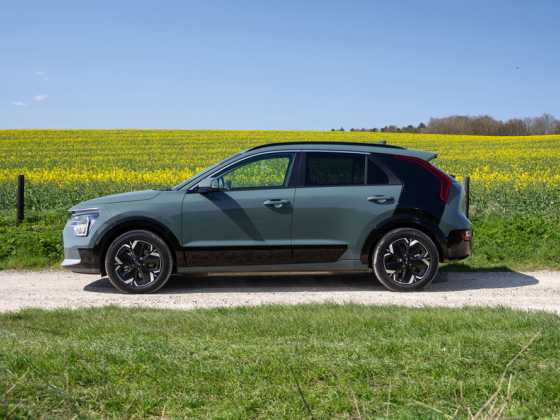Le freak c’est chic
Both chic and cutting-edge, the all-new Renault Twingo carries on from where the first generation left off.
 The original car was stylish, simple yet also mildly radical but with a rear-engined layout, the new Twingo is equally groundbreaking.
The original car was stylish, simple yet also mildly radical but with a rear-engined layout, the new Twingo is equally groundbreaking.
Renault has form when it comes to small and charming hatchbacks. The 1961 Renault 4 and the 1972 Renault 5 were stylish, practical and above all, chicly French. Conceptualised as a modern-day Renault 4, the first-generation Renault Twingo was launched in 1993 as a chic urban runabout. Cute look and a simple mono-box shape with a Fisher-Price-like interior cemented its cult status. Only available in the early days with a single engine single trim level model, the first-generation Twingo was only available in European left-hand drive markets. It proved extremely popular, selling over 2,478,648 examples.
Radical roots
The second-generation model arrived in 2007 and was based on the mechanicals of the contemporary Clio. Available in the UK, it was much less radical than its predecessor. The latest all-new Twingo first appeared at the 2014 Geneva motor show, going on sale in the UK in September of the same year. More radical than even its predecessors, it shares a rear‑wheel drive, rear-engined powertrain developed with Smart (which features in the German company’s latest Fortwo and Forfour models) and a five-door only body. It’s going back to its radical roots then, but with the added practicality of two further doors and more personalisation.
While the 2015 Renault Twingo is an all‑new design, it nods to Renaults past. The rear wing flares evoke the mid-engined Renault 5 Turbo and point to its rear-engined configuration. The overall silhouette bears more than a passing resemblance to the geometric 5, too. A bright colour palette points to Twingos past, as does the optional full-length fabric electric sunroof. Exterior highlights include hidden rear door handles and LED daytime running lights which look like ice cubes. The small bonnet and front wings are plastic to save weight, the former sliding forward to access top-up tanks for the engine liquids. It’s worth noting that there is no additional storage space under the bonnet, even though there is no engine underneath it.
Like the first-generation car, the basic range is made simple with two engines and three trim levels. As personalisation is key in 2015, the new Twingo is also available with six personalisation packs which marry various alloy wheel styles with different decals and interior trims. A city car trend, it does make the latest Twingo even more striking and aims to snare fashion-conscious drivers. Pricing of the packs range from interior and exterior ‘touch’ options at £100 to side decals at £150. The 16-inch alloy wheels on ‘our’ Dynamique SCe 70 Stop & Start cost £275. The folding canvas roof is £850.
Three-cylinder petrol engines
A pair of three-cylinder petrol engines power the new Twingo. A 999cc 70bhp normally-aspirated unit provides the motive power for SCe 70 Expression, Play and Dynamique models, while a turbocharged 898cc engine developing 90bhp lies under the bonnet of top-of-the-tree TCe 90 Dynamique models. Stop & Start is standard on TCe 90 variants and can be specified on SCe 70 models, taking emissions down to 99 and 95g/km respectively. Without the CO2-saving system, SCe 70 models emit 105g/km of CO2. This means they are placed in VED band B, as opposed to A for the cars with the system fitted. Fuel consumption is quoted as 67.2mpg on the SCe 70 Stop & Start model we tested. Our real-world average was 45.8.
At 865kg, the new Twingo weighs only as much as a 1970s supermini, so the engine feels punchy. Renault quotes a 0-62mph of 14.5 seconds and a top speed of 94mph. When venturing out of the urban landscape, the Twingo copes with motorway traffic admirably. The five-speed manual gearbox is slick and the steering is light but positive. Due to the engine sitting over the back axle, the front wheel only have to turn and steer rather than put down power, so can turn at 45 degrees. The old Twingo’s could only pivot 33 degrees, so the new model’s small turning circle of 8.59 metres really comes as a revelation. Suitably refined with only wind noise buffeting the windscreen pillars, the engine makes very little noise for front seat passengers due to its rear location. There’s a little more for those in the back, but overall, the Twingo is adept at handling out-of-town driving situations. The ride is comfortable for a car with such a small wheelbase.
R&GO app
Renault states that more cabin space has been liberated Inside thanks to the rear‑engined layout, pushing the wheels to the corners of the car. The new car is just under 100mm smaller than the old one, but the wheelbase is 12cm longer. While the interior will never be described as Tardis-like, the Twingo offers reasonable accommodation for rear seat passengers. The interior itself is kept simple with one instrument dial and a central colour R&GO infotainment touchscreen connectivity system. Featuring Bluetooth, DAB radio, twin USB sockets and a smartphone cradle, the R&GO system also includes a free to download mobile app.
Once installed on and connected to your smartphone in the cradle, this software controls phone and media functions. It also includes certain free maps for satellite navigation and also displays vehicle information such as a rev counter, trip computer, fuel consumption information as well as an eco driving score. It’s a very useful piece of kit, and makes you question the need for aftermarket or standard fit costly sat nav systems. Other nice interior design details include the use of bright colours, Twingo logos on the rear door panels as well as a simple strap to keep bottles or baguettes in place.
Engaging and characterful
The Twingo’s rear-engine layout harks back five decades or more to when small cars almost universally featured rear-wheel drive powertrains. It’s a brave move by Renault, but by sharing development costs and parts with Smart, it has succeeded in bringing an engaging and characterful small car to the crowded city car market. Yes, there are compromises. Rear boot space suffers due to the avantgarde engine layout and the rear windows just pop out rather than wind down (though selected competitors are the same).
The new Twingo is up against some stiff competition, including the GreenFleet Award-winning Citroën C1, the Peugeot 108, the SEAT Mii, the Skoda Citigo, the Toyota Aygo and the Volkswagen Up. Priced from £9,495 to £11,695, the all-new Twingo range is, on the whole, built well and competitively priced against its rivals. BIK is only 12 per cent, but an exclusively-petrol range means that economy suffers against higher-rated but more economical diesel small cars. Overall, though, the new Twingo is a winner. Fun, stylish, and a little bit different, it brings more than a little joie de vivre to the city car class.
Renault Twingo Dynamique SCe 70 S/S
ENGINE: 999cc, three-cylinder petrol
CO2: 95g/km
MPG (combined): 67.2
VED: Band A, £0
BIK: 12%
PRICE (OTR): £10,995 (including VAT, £112,365 as tested)









